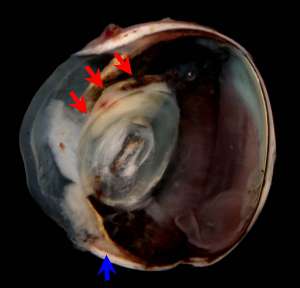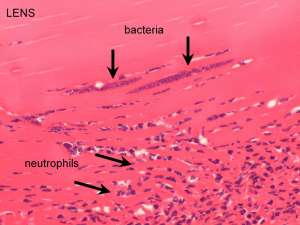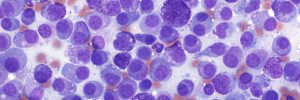Septic lens implantation syndrome
This is the globe from a 3-year-old male DSH that suffered a penetrating cat claw injury to the cornea of the right eye.


Final Diagnosis
Lens rupture associated with septic suppurative phakitis
Discussion
Penetrating corneal injuries in dogs and cats are fairly common and a proportion of these can involve the lens resulting in lens capsule rupture, cataract and subsequent lens-induced uveitis due to a leakage of lens protein into the eye. In the case of a cat claw injury for example, bacteria (and sometimes fungi) will typically be implanted into the lens resulting in a septic suppurative phakitis (inflammation of the lens) and associated endophthalmitis. This is known as septic lens implantation syndrome and carries a poor prognosis for the eye

